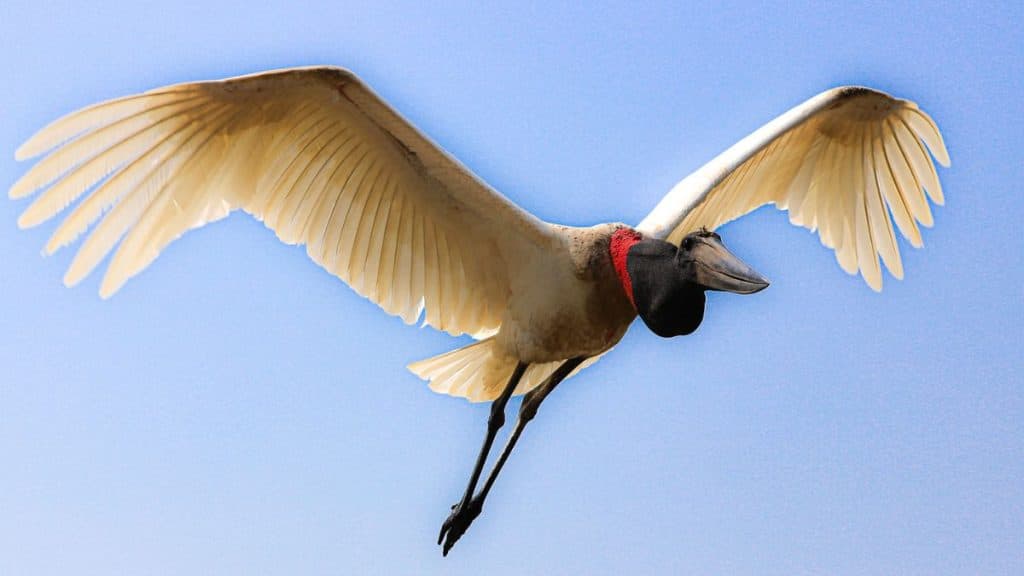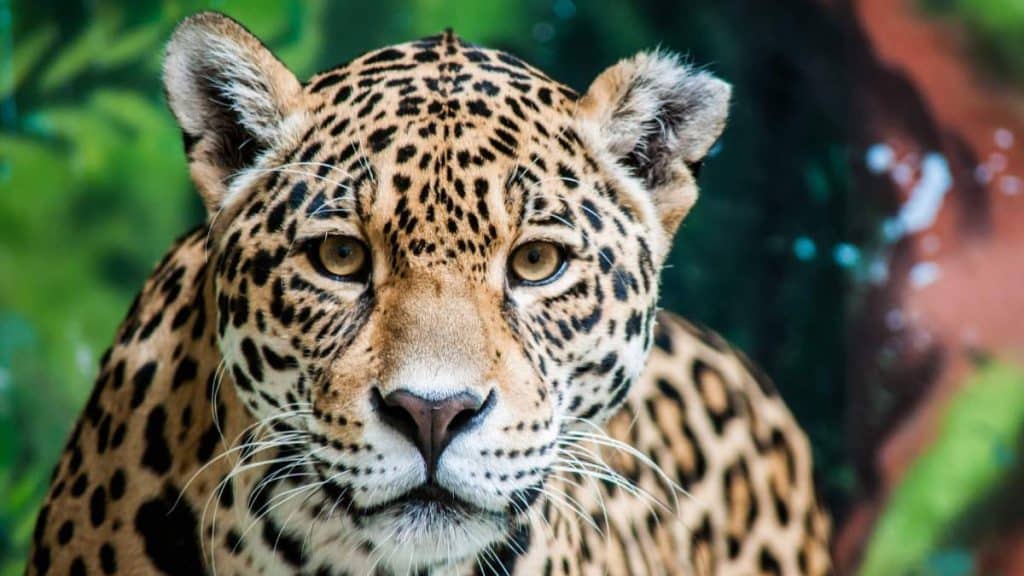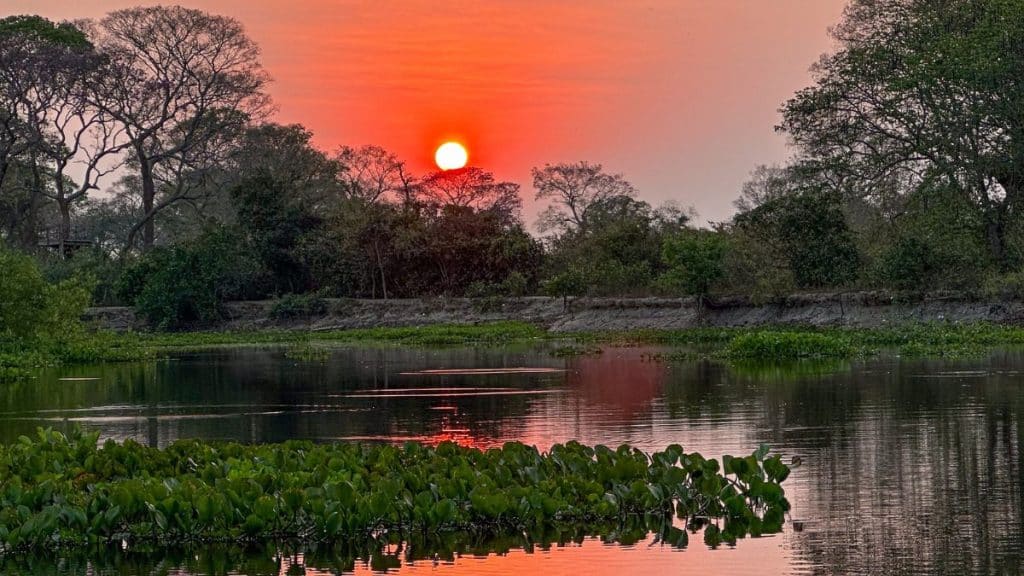What kind of birdwatcher are you? Are you the backyard variety, just happy to get to know the birds that come to your feeder? The avid photographer with an array of lenses designed to get up close and personal with distant targets and freeze every moment of spectacular flight into a perfect shot? Are you the guy with the binoculars and the bird book, always adding to your life list? Or do you just love these creatures of the air for their gifts of beauty, vibrant life, and the magic of flight?
The Amazing Pantanal Birds
For every kind of birder, there is one destination that must be visited –- the Pantanal of Brazil. If you’ve never seen much more than some robins and sparrows, a few days in the great wetland will absolutely transform your life, introducing you to an array of birds with shapes, sizes, colors, and behaviors that you’ve never even imagined. For the birder working on a life list, the Pantanal hosts some 656 species, one of the greatest concentrations of bird life on earth. And the serious photographer will find fabulous opportunities to capture this mind-boggling avian array in the open landscape of the Pantanal, with its rivers, forests, and grasslands inviting every kind of behavior, all in the sun- and water-drenched light unique to the Pantanal.
Consider just some of the “signature” species you are sure to encounter there. The Jabiru Stork is an icon of the vast marshland. At SouthWild’s Pantanal Lodge, you can get to know this largest of the storks by climbing our observation tower to watch our resident pair of Jabirus at eye level in their nest just meters away. Standing over five feet tall, with their handsome black, white, and red colors and their eight-foot wingspan, they define charisma. Whether busy with nest construction, fishing, or tending their chicks, our Jabirus are always camera-ready.
Meet the gorgeous Hyacinth Macaw, one of the world’s most beautiful birds and the largest of all the parrots. Its deep cobalt blue plumage with its distinctive yellow eye ring mark it as another iconic bird of the Pantanal. The graceful, long-tailed Hyacinths mate for life and often live in small flocks famous for their raucous calls and chatter. Threatened by habitat loss and the illegal pet trade, these beautiful, vulnerable birds are our prized neighbors and you will definitely see them.
Adjust your shutter speeds to capture the Greater Rhea on the run – it’s not only the largest bird in South America but it’s the fastest runner as well. The Rhea is a ratite, a flightless bird similar to Africa’s ostrich and Australia’s emu. It prefers the open savannas of the Pantanal, where its powerful legs can carry it at speeds up to 40 MPH. Greater Rheas live in small groups called crêches and nest on the ground. After the female lays her eggs, the male takes over all incubation and chick-rearing duties. The extraordinary-looking Rheas will make an easy addition to your life list as they stroll past our lodge every day.
Do you hear a loud, deep, almost metallic note sounding in the trees? It’s probably a Toco Toucan, whose distinctive call is one of the signature sounds of the Pantanal. Of course, the Toco Toucan is most famous for its enormous bill, which can account for as much as 30% of its overall length. Brilliant orange with a black patch, this lightweight but powerful bill gives the Toco an advantage in reaching every kind of fruit, its preferred diet. The Toco Toucans are frequent early morning visitors to the trees around our Pantanal Lodge swimming pool.
Roseate Spoonbills and Buff-necked Ibises are both long-legged birds with quite different behaviors. The Roseate Spoonbill is a wading bird famed for its beautiful plumage, with pink feathers on its body and white ones on its wings and back. It also boasts a most distinctive large bill, truly spoon-shaped, that broadens and flattens toward its tip. It serves as a perfect water filter as the bird sweeps it back and forth in the shallows, trapping small fish, crustaceans, and aquatic insects. The Buff-necked Ibis, on the other hand, is a terrestrial feeder. It roams the savanna, using its long, curved bill to probe for prey in the soil or grass. It eats a variety of small vertebrates and invertebrates as well as seeds and fruit. Although its plumage is mostly brown, the buff-colored feathers on its neck give it its name. Both the spoonbills and the ibises gather in colonies during breeding season, giving photographers opportunities for spectacular group shots.
A few of the Pantanal’s sought-after bird species are admittedly challenging to spot. They are generally small, shy, and prefer to live amidst dense vegetation. The Rusty-backed Spinetail and the Pantanal Antshrike are two examples of hard-to-see species that birders long to glimpse and photograph. The best chance of spying them is in the company of our well-trained bird guides, who have spent long hours tracking these birds to their favorite hiding places. Our guides also use speaker equipment to pick up calls and songs that help locate elusive individuals. With time and patience, you have a good chance of adding such birds to your list.
However, most of the Pantanal’s beloved and photogenic birds are easy to see in the open grasslands or the treetops, such as the hawks, the guans, and the curassows, as well as many parrot species. Other favorites are found feeding along the waterways: five species of kingfishers, and several kinds of egrets and herons. Against our flowering pink and yellow trees, our winding green riverbanks, and our gorgeous sunsets, they make for the photographs of birdwatchers’ dreams.
Visit Pantanal
So don’t just dream about them. Come to South Wild’s home in the Pantanal and see these marvelous creatures for yourself. Up your birdwatching game to spectacular new heights. Bring your high-powered cameras – this is why you have them! Capture a Black Skimmer coming in fast, inches above a stream, parting the water with its jutting lower bill and snapping up a fish. Photograph a pair of brilliant Red-and-green Macaws soaring against our wide blue sky or a flock of Nanday Parakeets, their bright plumage topped by their dramatic, black-masked faces, flying home before the setting sun. The airshow never stops in the Pantanal. The birds are all here. Shouldn’t you be here, too?



